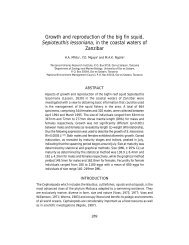gpa_east_africa_case.. - GRID Africa GeoPortal - UNEP
gpa_east_africa_case.. - GRID Africa GeoPortal - UNEP
gpa_east_africa_case.. - GRID Africa GeoPortal - UNEP
You also want an ePaper? Increase the reach of your titles
YUMPU automatically turns print PDFs into web optimized ePapers that Google loves.
Table 15: Sensitivity Analysis ($ million)Estimated Investment Cost 15.0Annual Operating Cost capitalised at 10% for 24 years 10.24Total Estimated Investment Cost 25.24Present Value of Estimated Benefits at 10% for 24 years 227.88Net Present Value 202.64Benefit / Cost ratio 9Estimated Investment cost by 25% higher 25.0 x 1.25 = 31.0Estimated benefits by 25% lower 228.0 x 0.75 = 171.0Benefit / Cost ratio 5.54. Assumptions and ResultsThe calculations should best be regarded as orders-of-magnitude. Economic estimates areheavily dependent on the quality of data and the level of detail attempted. The capital costconcerns the estimated investment for the construction of the proposed Sewerage System forthe Beau Vallon Area and is taken as given. The estimated 25-year period Net Present Valueis $202 million at 10% and $377 million at 5%. This shows the sensitivity of the results to thediscount rate at which future benefits are translated into present values. The Net PresentValue (benefits over costs) shows the value of the net “wealth” created by the Project,available to society. It is noted that Cost-Benefit Analysis does not focus on the financialimplications (funding and cash flows) of the proposed project from the point of view of theimplementing agency, but to the saving quality of resources for future use by society.The Benefit/Cost ratio shows the coverage of costs by the expected benefits and, like the NetPresent Value, is an indicator of the social viability of the proposed Project. The ratio ofbenefits to costs is 9 meaning that the benefits are nine times the costs.The simple sensitivity analysis is attempted to show the changes to the results from highercosts and lower level of benefits. The Benefit-Cost Ratio is reduced to 5.5. The percentage of25% may be considered too high but it is wise to used it when cost estimates are broad andbenefit estimation contain possible errors an inaccuracies inherent in the available data.This Cost-Benefit Analysis does not include the cost of other measures on which informationis not available. This does not necessarily pose a major problem because it is possible tosuggest an alternative approach compatible with Cost-Benefit Analysis. There are datadifficulties involved. It is difficult to estimate the cost of institutional and legal measures, andexpenditure for strengthening departmental responsibilities for monitoring and research, etc.Also many measures may have cost overlaps, synergies or “economies of scale”. Also, thebenefits of pollution management cannot be fully realised by one-track infrastructure actionconfined to building and operating Sewerage Systems, although it may be the single mostimportant investment cost. Integrated environmental management programmes, coastal zoneplanning and commitment to sustainable development are essential constituent componentsof pollution management.How far could this issue be addressed within the framework of this present CBA? The aboveanalysis shows a NPV of $202 million. It is possible to suggest therefore that additionalmanagement, institutional, legal/regulatory, research and other initiatives, which are inany <strong>case</strong> required to support the long-term objectives of infrastructure projects,should be implemented even if they cost up to $202 million. In terns of CBA such level ofexpenditure over time would be justified. Of course, the separate question of financing suchexpenditure remains. The Case Study may also provide guidelines for identifying preliminarydesign options at l<strong>east</strong> from the cost point of view. The estimated investment cost of theProject ($15 million) will serve a population equivalent of 13,000. It should be possible toprioritise actions targeted at the most immediate hot spots problems yielding the higherbenefits per unit of investment. Social benefit should be a major consideration, together withcost-saving construction phasing, in prioritising the use of investment resources for sewerageinfrastructure.Final Draft Report – Cost Benefit Case StudiesGPA Strategic Action Plan on Sewage, October, 200055



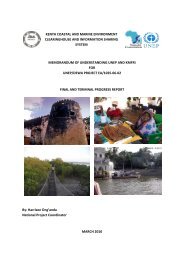

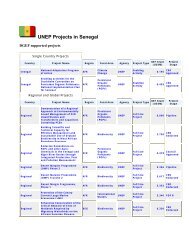

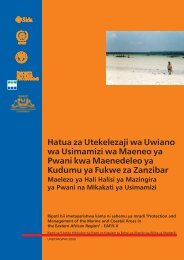
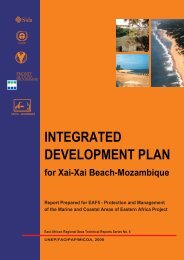

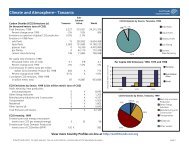

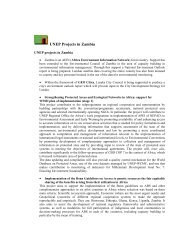
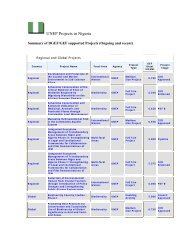
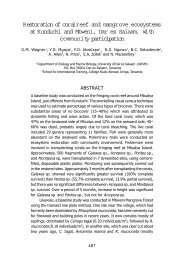
![Please Click to download [English] - GRID Africa GeoPortal - UNEP](https://img.yumpu.com/30633391/1/184x260/please-click-to-download-english-grid-africa-geoportal-unep.jpg?quality=85)
